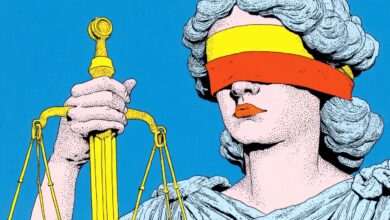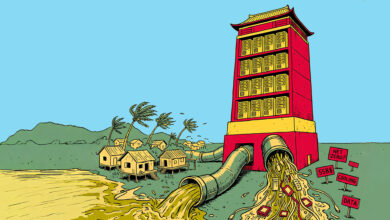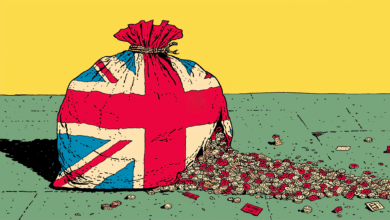Beyond the Welfare State

Since the launch of the War on Poverty in the 1960s, the rate of those living in poverty, as defined by the US government, has stubbornly persisted. Yet before that, the American poverty rate was dropping fast. It was around 32% in 1950, but postwar prosperity and a booming job market lifted thousands out of destitution, bringing it to 12.8% by the time the War’s programs took effect in 1968. Yet in the intervening half-century, it has never dropped below 10%. This is not for lack of effort. Per capita government spending on the poor has gone from $2,701 at the outset to $29,214 today (adjusted for inflation).
Some point out that standards of living among the poor have risen, if you consider welfare benefits, which the official poverty measure excludes. While they are correct—material well-being has improved—there is ample reason to understand that poverty persists as a real problem, rather than a data artifact.
Case in point: About 34% of children born in poverty will remain there throughout their lives. For no substantial portion of their lives will they produce enough economic value to provide for themselves without subsidy. Furthermore, many of the maladies associated with chronic poverty are worsening:
Social connectedness is much lower for people with lower incomes.
Poor children are significantly less likely to benefit from the “two-parent privilege.”
65% of working-age people in poverty did not work for a single week in 2023; only 10% worked full-time, all year long.
So called “deaths of despair” from suicide and substance abuse are at record highs.
These facts suggest an alienated socio-economic class mired in hardship despite the upward mobility of the middle class. This is bad for our republic, as well as for the individuals entrapped. And yet, massive spending on everything from direct cash transfers to college grants has failed to budge the numbers.
To charity practitioners who know many of these people, there is no mystery. They know if you’re currently taking full advantage of economic opportunities in America, chances are someone invested in you—not necessarily with money, but by forming your character, influencing your sense of purpose, and bridging connections that served you well.
These intangible assets like grit, integrity, faith, and reliable friends are critical not only to escape poverty, but also to live a flourishing life in ways that can’t be measured in dollars.
Federal programs ignore most of these deficits. Their theory of change is that if enough financial benefits are transferred to the poor, recipients will figure everything else out on their own. Not only has that approach proven ineffective; it often provides perverse incentives like marriage penalties and benefits cliffs.
Enter civil society. With its personal relationships and motivating purpose of care, civil society is best adapted to help people grow, thrive, and get back up when they fall.
To understand the forgotten magic of civil society (voluntary associations like churches, charities, and families), we must understand its role alongside the parallel spheres of the government and the market.
The government, with its monopoly on violence, is good at providing for the common defense and protecting people from fraud and abuse. No country has made a dent in poverty without law and order to secure private property and enforce contracts.
When the rule of law is established, the market uses the profit motive to generate wealth. Individuals leverage economic multipliers like voluntary exchange, division of labor, the price mechanism, and technological innovation to grow the pie for everyone.
And yet, even where opportunity abounds, people can remain mired in addiction, hopelessness, or idleness. Dysfunction often passes intergenerationally in a toxic brew of low aspirations, minimal connections, and underdeveloped talent.
To put it another way: government constrains humans at their worst, markets transform self-interest into common good, and civil society calls forth the best elements of humanity.
In the context of poverty alleviation, this takes the form of charity: the voluntary rendering of aid to people in need. For systemic reasons, families, friends, clubs, churches, and charities can render better service to people in poverty than government agents could.
People closer to home have inside knowledge about the individual—and the autonomy to act on it. That allows them to discern whether someone needs a pat on the back, a gift of cash, or some tough love. Conversely, federal programs are uniform by statute, so eligibility tests and asset limits often result in “one-size-fits-none.”
In addition, stories of effective service to the most vulnerable and sympathetic generate the greatest donor contributions. This provides a helpful incentive to charities to allocate the resources to those least able to control their circumstances and most invested in their own solutions. Contrast that with the government’s incentives to fund programs with electoral results in mind (which often includes third parties, like the soda industry).
Charities’ competition for donor funds also drives innovation, something sorely lacking in federal programs whose particulars were originally hammered out on manual typewriters.
Civil society wields a scalpel sharp enough to cut to the heart of the matter. A friend, pastor, or case manager can speak to issues of meaning and purpose, model virtue, make useful introductions, and coach people as they blaze their own path out of poverty. They can leverage reciprocity and engage people’s capacity and talents. Effective charity isn’t business; it’s personal.
Can voluntary charity really replace the federal welfare state? Not if you simply tally up all the federal expenditures and assume donors must replace them dollar for dollar. But similar to how SpaceX can launch a rocket at less than 4% of NASA’s cost, civil society is primed to perform poverty alleviation functions at a dramatically lower cost.
The biggest impact would come when many of the 13 million non-working beneficiaries (only considering people between 18–64 years old) lose perverse incentives and decide to enter the labor force.
As well, other low impact programs captured by special interests would never be funded by private donors. Government cheese would end up on the chopping block.
That’s not all. Others would be helped without dollars changing hands. Family ties would strengthen as a safety net. Where that’s not an option, we’d no doubt see a renewed interest in informal social insurance through mutual aid societies, civic clubs, and faith communities—all of which were more common in the period of our history when poverty fell rapidly.
The good news is that we don’t have to wait for a major shift in public policy to start making an impact. As an ordinary American, I can’t point to a single government policy that I have changed, but I know many individuals I have impacted with my voluntary assistance.
That’s why we shouldn’t believe that our efforts to help people in need pale in comparison to the impact of the state. The lion’s share of solutions for the poor has always come from individuals who care enough to get to know them—and then provide real help of lasting value. The facts speak for themselves.
And it’s time to listen.
The post Beyond the Welfare State was first published by the Foundation for Economic Education, and is republished here with permission. Please support their efforts.



